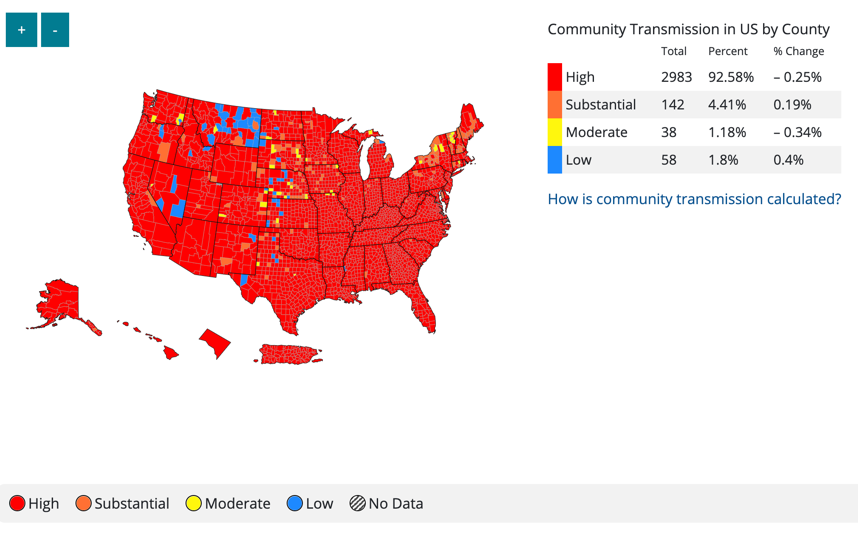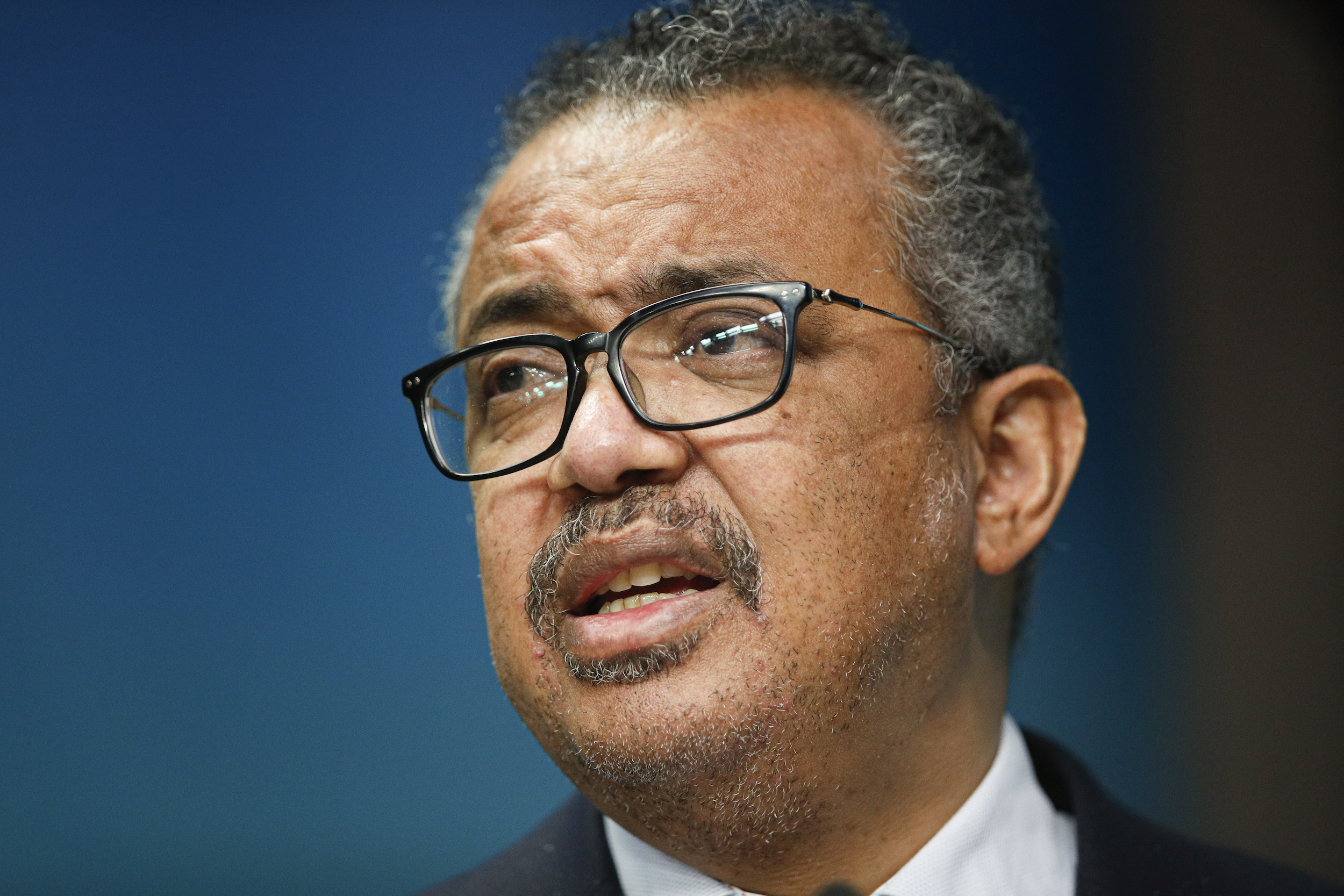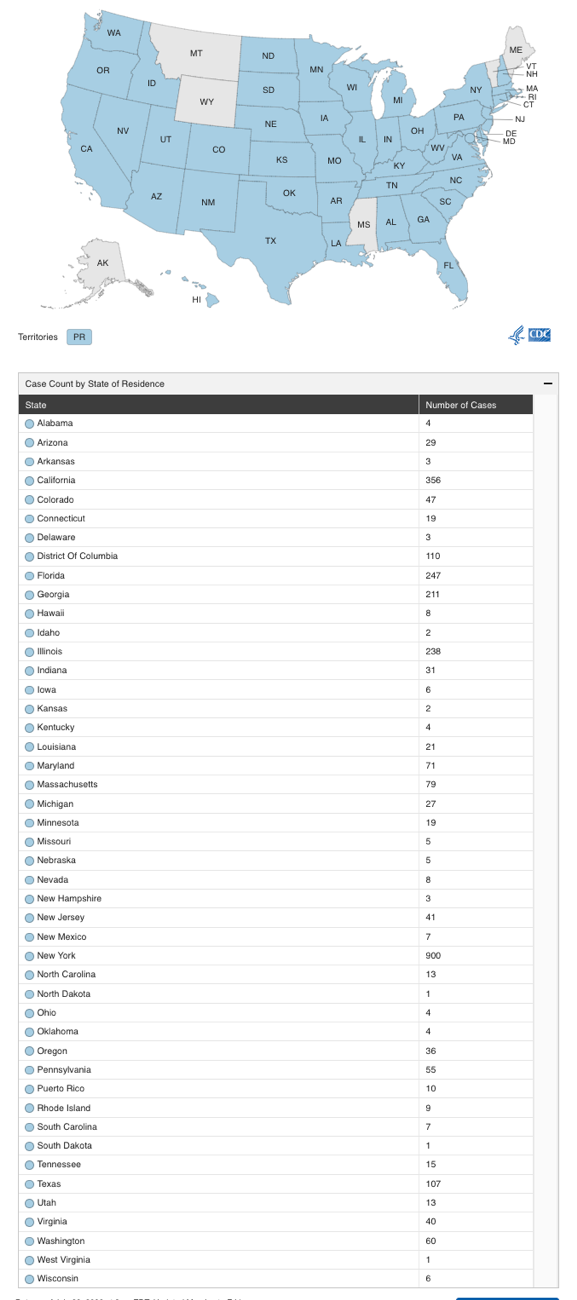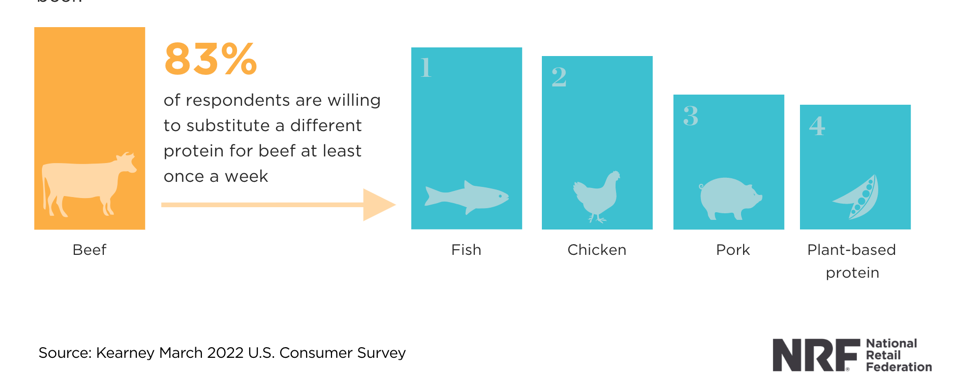 Covering COVID-19 is a daily Poynter briefing of story ideas about the coronavirus and other timely topics for journalists, written by senior faculty Al Tompkins. Sign up here to have it delivered to your inbox every weekday morning.
Covering COVID-19 is a daily Poynter briefing of story ideas about the coronavirus and other timely topics for journalists, written by senior faculty Al Tompkins. Sign up here to have it delivered to your inbox every weekday morning.
It is too soon to tell if California is seeing a short temporary dip in COVID-19 cases or a real decline. But, on Friday, Los Angeles County may come back under a mandatory indoor mask order.
Los Angeles County Public Health Director Barbara Ferrer said, “I do want to note, however, that over the past two months, we have seen some small dips that were then followed by additional increases, so it does make sense for us to continue to be cautious, given the relatively high number of cases we see.”
Ferrer continued, “Should we start seeing a steep decline in our numbers next week … we are likely to want to take a pause on moving too quickly on a universal indoor masking (order). Because if our cases really start a steep decline, it’s likely that a couple of weeks from now, our hospitalizations will also decline.”
The Los Angeles Times reports:
A renewed mandate would apply indoors for anyone age 2 or older at a host of establishments and venues, including shared office space, manufacturing and retail settings, event spaces, restaurants and bars, gyms and yoga studios, educational settings and children’s programs.
This is how we start the week nationally. First, here’s the widespread map of COVID-19 transmission.

(CDC)
The latest national map of COVID-19 hospitalizations is still showing most parts of the country with a modest hospitalization rate. But there are growing pockets of higher hospitalization rates.

COVID-19-related hospitalization rates (CDC)
COVID-19 puts Japan on ‘highest alert’
COVID-19 cases are rising rocket fast in Japan and the government is telling citizens to be on the “highest alert.” The Guardian reports:
More than 186,000 cases were recorded nationwide on Thursday, while Tokyo easily beat its existing daily record with 31,878 cases.
The Kyodo news agency reported that some members of the official Covid advisory panel had called on the government to consider placing areas with the highest infection rates under a state of emergency – a move that could include restricting people’s movements and requiring bars and restaurants to close early and limit alcohol sales, or face fines.
That appears unlikely given that the current wave – Japan’s seventh of the pandemic – has disproportionately affected children and young people. The virus panel warned, however, that a recent rise in cases among people aged 60 could see more patients developing serious symptoms.
WHO declares monkeypox a ‘global health emergency’

The head of the World Health Organization, Tedros Adhanom Ghebreyesus, speaks during a media conference at an EU Africa summit in Brussels on Feb. 18, 2022. (Johanna Geron/Pool Photo via AP, File)
Over the weekend, the World Health Organization said monkeypox has become a global health emergency. That means WHO sees the viral outbreak as significant enough to require international coordination.
Pay attention to the statement from WHO chief Tedros Adhanom Ghebreyesus, who said, “I have decided that the global monkeypox outbreak represents a public health emergency of international concern.” He made the decision because the full WHO panel could not come to an agreement. Ghebreyesus said, “WHO’s assessment is that the risk of monkeypox is moderate globally and in all regions, except in the European region where we assess the risk as high.”
The WHO says the outbreak is not bad enough to disrupt international travel and trade as COVID-19 has, but cases keep multiplying around the globe. The WHO does not issue mandates, only guidance and research.
The Centers for Disease Control and Prevention has been trying to find out more about two children in the U.S. who were diagnosed with monkeypox. One child lives in California and the other is not a U.S. resident, the CDC says.
The White House has not decided yet whether 2,800 U.S. monkeypox cases are enough to have to declare a national health emergency on top of the COVID-19 emergency. Bloomberg reports that there is an ongoing conversation high in the Biden administration about whether and when to declare a monkeypox emergency. Such an announcement would be made by the U.S. Department of Health and Human Services.

Monkeypox case counts in the United States (CDC)
An article in the New England Journal of Medicine says new symptoms are showing up that make it difficult to diagnose monkeypox cases. The article said some doctors reported their patients did not have multiple bumps on their skin but only single sores in their mouth, anus or genitals. Without testing, those symptoms can be easily confused with other infections, including syphilis or herpes.
This week, hundreds of thousands of people in the U.S. will have access to 300,000 monkeypox vaccines that have been shipped in.
More than 16,800 cases of monkeypox have been reported across more than 74 countries so far this year, and the number of confirmed infections rose 77% from late June through early July, according to WHO data. Men who have sex with men are currently at highest risk of infection.
Five deaths from the virus have been reported in Africa this year. No deaths have been reported outside Africa so far.
Most people are recovering from monkeypox in two to four weeks, according to the U.S. Centers for Disease Control and Prevention. The virus causes a rash that can spread over the body. People who have caught the virus said the rash, which looks like pimples or blisters, can be very painful.
The current monkeypox outbreak is highly unusual because it is spreading widely in North American and European nations where the virus is not usually found. Historically, monkeypox has spread at low levels in remote parts of West and Central Africa where rodents and other animals carried the virus.
The New England Journal of Medicine article gives us a detailed look at how the virus is being transmitted so far.
- The suspected means of monkeypox virus transmission as reported by the clinician was sexual close contact in 95% of the persons. It was not possible to confirm sexual transmission. A sexual history was recorded in 406 of 528 persons; among these 406 persons.
- The median number of sex partners in the previous 3 months was 5 partners.
- 147 (28%) reported travel abroad in the month before diagnosis.
- 103 (20%) had attended large gatherings (>30 persons), such as Pride events.
- Overall, 169 (32%) were known to have visited sex-on-site venues within the previous month, and 106 (20%) reported engaging in “chemsex” (i.e., sex associated with drugs such as mephedrone and crystal methamphetamine) in the same period.
- A total of 70 persons (13%) were admitted to a hospital.
- The most common reasons for admission were pain management (21 persons), mostly for severe anorectal pain, and treatment of soft-tissue superinfection (18).
- Other reasons included severe pharyngitis limiting oral intake (5 persons), treatment of eye lesions (2), acute kidney injury (2), myocarditis (2), and infection-control purposes (13).
- There was no difference in the frequency of admission according to HIV status. Three new cases of HIV infection were identified.
Yahoo News reports, “98 percent of infected people were gay or bisexual men, and around a third were known to have visited sex-on-site venues such as sex parties or saunas within the previous month.”
Since it is now a “global health emergency,” let’s go over the facts that journalists should know about this virus. The WHO says:
- Vaccines used during the smallpox eradication program also provided protection against monkeypox. Newer vaccines have been developed of which one has been approved for prevention of monkeypox.
- Monkeypox is caused by monkeypox virus, a member of the Orthopoxvirus genus in the family Poxviridae.
- Monkeypox is usually a self-limited disease with the symptoms lasting from 2 to 4 weeks. Severe cases can occur. In recent times, the case fatality ratio has been around 3–6%.
- Monkeypox is transmitted to humans through close contact with an infected person or animal, or with material contaminated with the virus.
- Monkeypox virus is transmitted from one person to another by close contact with lesions, body fluids, respiratory droplets and contaminated materials such as bedding.
- Monkeypox is a viral zoonotic disease that occurs primarily in tropical rainforest areas of central and west Africa and is occasionally exported to other regions.
- An antiviral agent developed for the treatment of smallpox has also been licensed for the treatment of monkeypox.
- The clinical presentation of monkeypox resembles that of smallpox, a related orthopoxvirus infection which was declared eradicated worldwide in 1980. Monkeypox is less contagious than smallpox and causes less severe illness.
- Monkeypox typically presents clinically with fever, rash and swollen lymph nodes and may lead to a range of medical complications.
The virus was thought to have been eliminated in 1968, then emerged again in 1970 in a 9-month-old boy in the Democratic Republic of the Congo. Since then, cases have been reported all over central Africa. In 2003, monkeypox showed up in the United States, linked to pet prairie dogs that had been imported from Ghana.
Customers buying cheaper beer and cigarettes due to inflation
When there was a lot of stimulus money in their pockets, beer drinkers and smokers bought brand names, even premium brand names. But The Wall Street Journal says discount brands are making a comeback:
In the four weeks ended July 2, retail-store sales of economy beer increased by 5.4% from the same period last year, according to an analysis of Nielsen data by beer-industry consultant Bump Williams Consulting Co. Brands in the category making the biggest gains this year include Busch Light, Icehouse and Milwaukee’s Best Ice. Last year, retail-store sales of economy beer fell by 10.9%.
Anheuser-Busch InBev SA, which makes Busch Light, the bestselling economy beer brand in the U.S., said limited release “For the Farmer” cans, designed in collaboration with John Deere, have helped fuel the brand’s growth, along with a seasonal apple-flavored version of the beer. The brand is most popular in Wisconsin and is growing fastest in Tennessee, according to the company.
Not all beer drinkers are trading down. Sales of imported and superpremium beers like Modelo Especial and Michelob Ultra also are growing, underscoring the impact that inflation is having on lower-income consumers while more affluent people continue to spend more freely.
The National Retail Federation says inflation also has families rethinking what they eat. They are substituting cheaper meats and eating meat less often.
Discount store traffic is picking up, while other retailers are seeing a slowdown. Discount and dollar stores usually see their biggest traffic in December, but they are seeing an unusual surge in sales right now thanks to inflation.
We’ll be back tomorrow with a new edition of Covering COVID-19. Sign up here to get it delivered right to your inbox.








